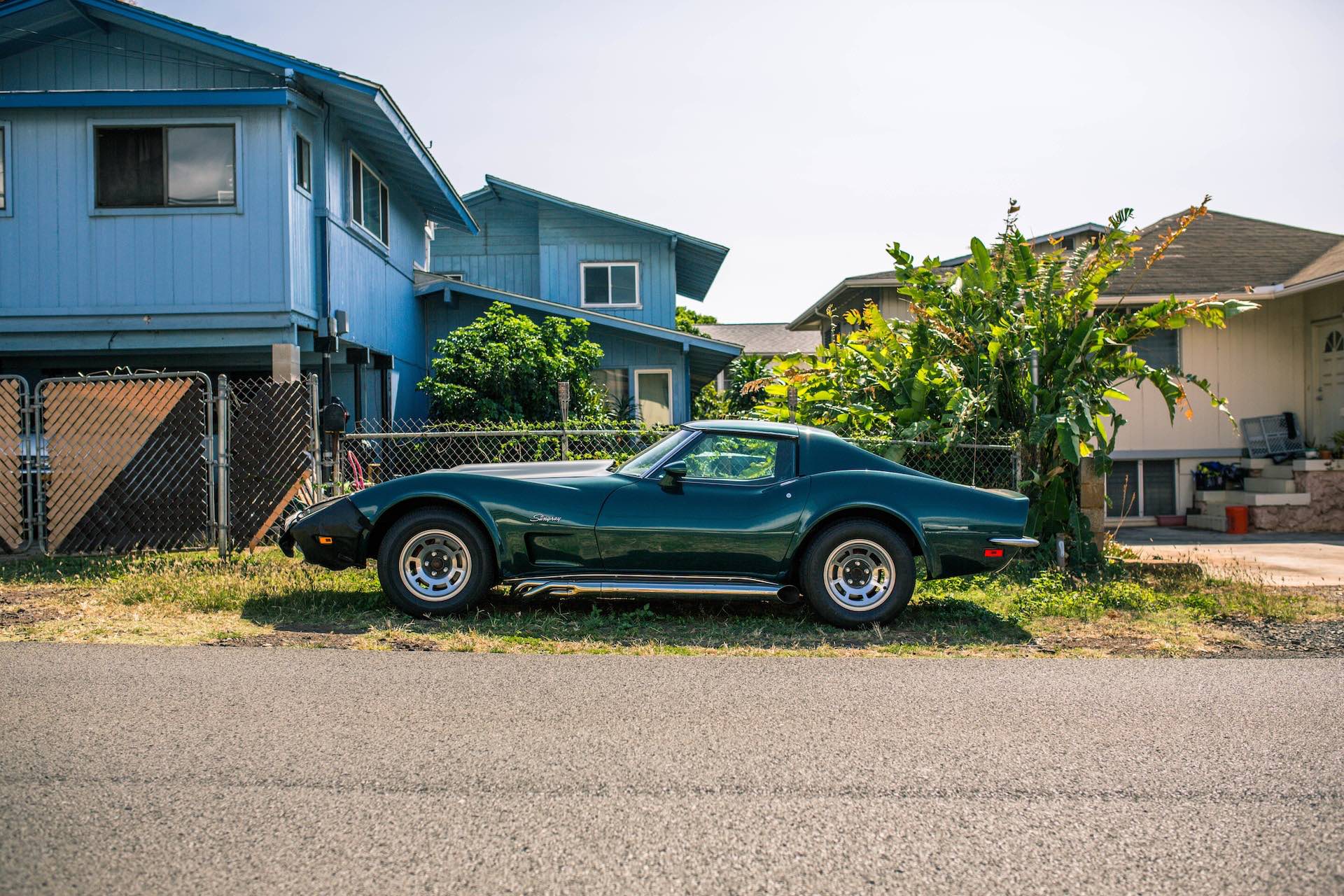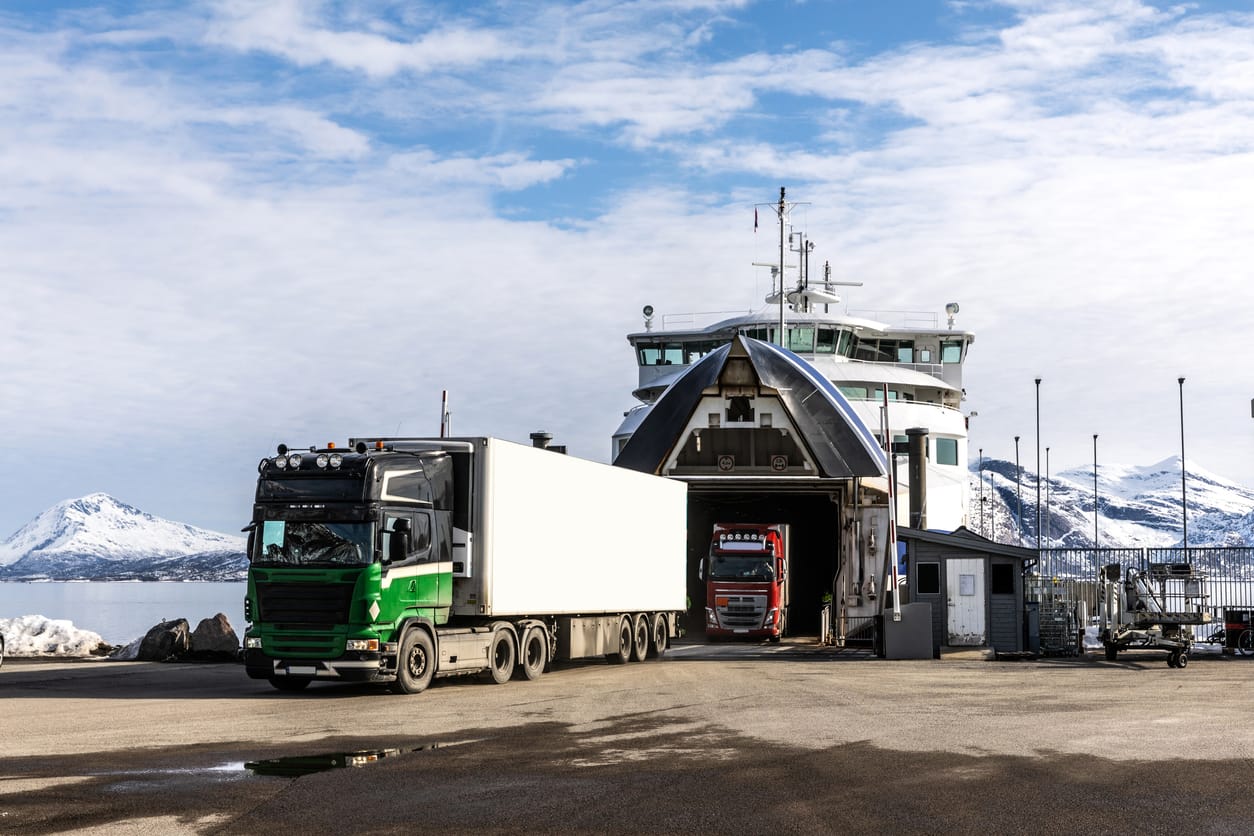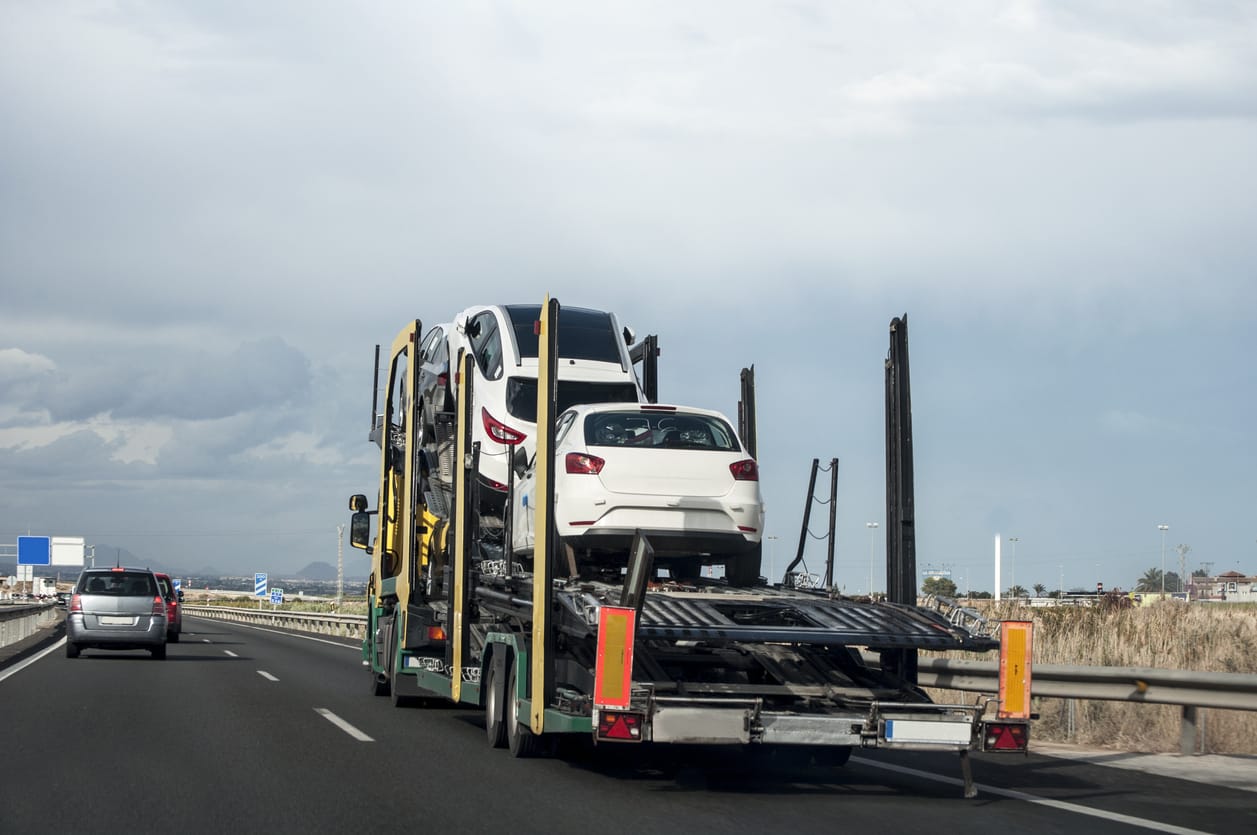If you’re considering shipping your car to Hawaii, it’s important to understand the process and make informed decisions. Ship A Car, Inc. provides the perfect solution for hassle-free car shipping to Hawaii. In this article, we will explore why shipping your car to Hawaii can be beneficial, provide an overview of the shipping process, and highlight the importance of planning ahead.
Shipping your car to Hawaii offers several advantages. First and foremost, it allows you to have your vehicle with you when you arrive on the islands, eliminating the need to purchase a new car or rely solely on public transportation. It provides the convenience of having your familiar vehicle in a new and exciting environment.
Moreover, shipping your car can save you money in the long run. While the initial cost of shipping may seem significant, it can be more economical than selling your car and buying a new one in Hawaii, especially if you have a valuable or specialized vehicle.

The process of shipping your car to Hawaii involves several key steps. First, you need to research and select a reputable car shipping company like Ship A Car. They specialize in shipping vehicles to and from Hawaii, offering reliable services and expertise in handling all aspects of the process.
Once you’ve chosen a shipping company, you’ll need to prepare your vehicle for shipment. This includes cleaning the interior and exterior, removing personal belongings, securing loose parts, disabling alarms, and ensuring proper fuel levels.
Next, you’ll need to coordinate with the shipping company to schedule pickup and drop-off dates. They will guide you through the necessary paperwork, documentation, and permits required for shipping to Hawaii.
During transit, your vehicle will be securely loaded onto a ship and transported to the designated port in Hawaii. The shipping company will provide you with estimated transit times, keeping you informed throughout the journey.
Upon arrival, you’ll need to pick up your car from the port and complete the necessary inspections and customs clearance procedures. It’s essential to familiarize yourself with Hawaii’s registration and safety requirements to ensure a smooth process.
Importance of Planning: Ship A Car, Inc. as the Perfect Option
Planning ahead is crucial when shipping your car to Hawaii. By choosing a reliable and experienced shipping company like Ship A Car, you can benefit from their expertise and streamline the entire process.
Ship A Car offers a range of services tailored specifically for car shipping to Hawaii. They have extensive knowledge of the logistics involved, ensuring that your vehicle reaches its destination safely and on time. With their expertise, you can navigate through the paperwork, permits, and regulations with ease.
Furthermore, Ship A Car provides excellent customer service, keeping you informed at every stage of the shipping process. They prioritize the security and care of your vehicle, giving you peace of mind throughout the journey.
Shipping your car to Hawaii can be a convenient and cost-effective solution. With Ship A Car, Inc. as your trusted shipping partner, you can rest assured that your vehicle will be handled with utmost care and professionalism. By planning and choosing the right shipping company, you can make the process smooth and stress-free.

Shipping a car to Hawaii involves understanding the various logistics and options available. In this section, we will explore the shipping routes and options, including direct and indirect shipping, roll-on/roll-off (RoRo) services, and container shipping. Additionally, we’ll discuss the importance of choosing the right shipping company and obtaining the necessary documents and permits.
Shipping Routes and Options
When shipping your car to Hawaii, you have different routes and options to consider. The two primary routes are:
1. Direct Shipping: This route involves shipping your car directly to Hawaii from the mainland. It offers a shorter transit time and is generally more convenient.
2. Indirect Shipping: With indirect shipping, your vehicle is transported to Hawaii via another port or transhipment point. This option may have longer transit times and may require additional coordination.
Roll-on/Roll-off (RoRo) Services
RoRo services are a popular option for shipping vehicles to Hawaii. This method involves driving the vehicle onto a specialized vessel, where it is securely stowed and transported. RoRo services are often cost-effective and suitable for most standard-sized vehicles.
Container Shipping
Container shipping involves placing your vehicle inside a shipping container for transportation. This method provides additional protection, particularly for high-value or classic cars. It allows you to ship personal belongings along with your vehicle, making it a convenient option if you’re moving to Hawaii.

Selecting a reliable shipping company is crucial for a smooth and successful car shipping experience. Consider the following factors when choosing a shipping company:
1. Researching and Comparing Companies: Conduct thorough research and compare different shipping companies. Look for those specializing in car shipping to Hawaii and with a good track record.
2. Reading Customer Reviews and Testimonials: Read customer reviews and testimonials to gauge the reputation and reliability of the shipping company. This feedback can provide valuable insights into their level of service.
3. Verifying Licenses and Insurance: Ensure that the shipping company is properly licensed and insured to handle vehicle transportation. This verification gives you confidence in their professionalism and adherence to industry standards.
Obtaining Necessary Documents and Permits
Before shipping your car to Hawaii, you’ll need to gather the required documents and permits. These typically include:
- Vehicle Registration and Title: Ensure your car is registered and has a valid title.
- Proof of Ownership and Insurance: Provide documentation proving your ownership of the vehicle and insurance coverage.
- Hawaii Department of Transportation Requirements: Familiarize yourself with the specific requirements set by the Hawaii Department of Transportation for importing vehicles. This may include emission standards, safety inspections, and other regulations.

Properly preparing your car for shipment is essential to ensure its safety during transit. In this section, we will discuss the necessary steps to prepare your vehicle, including cleaning and inspecting both the interior and exterior, documenting existing damage, removing personal belongings, securing loose parts and accessories, disabling alarm systems, ensuring proper fuel levels, handling fluids and batteries, and understanding insurance coverage.
Cleaning and Inspecting Your Vehicle
Before shipping your car, it’s important to clean and inspect it thoroughly. This step helps in documenting the vehicle’s condition and identifying any existing damage. Focus on both the interior and exterior of the car.
Interior Cleaning
Clean the interior of your car by removing any personal belongings and vacuuming the seats, carpets, and floor mats. Wipe down surfaces and ensure there are no loose items that could move around during transit.
Exterior Cleaning
Wash the exterior of your car to remove dirt, dust, and grime. Pay attention to areas like the wheels, undercarriage, and windows. Cleaning the car allows for a better inspection of the vehicle’s condition.
Documenting Existing Damage
Before shipping, document any existing damage to your vehicle. Take clear photographs from multiple angles, capturing any scratches, dents, or other noticeable marks. This documentation will serve as evidence in case of any disputes regarding the condition of your car upon delivery.
Removing Personal Belongings
Remove all personal belongings from your car before shipping. Shipping companies typically prohibit the transportation of personal items due to safety and liability reasons. Remove any loose items, such as electronics, valuables, and personal documents.
Securing Loose Parts and Accessories
Ensure that all loose parts and accessories in your vehicle are properly secured. Items like spoilers, bike racks, and removable mirrors should be either removed or securely fastened. This prevents them from getting damaged or causing any harm during transit.
Disabling Alarm Systems
If your vehicle has an alarm system or anti-theft device, consider disabling it before shipping. This prevents any unintended activation of the alarm during transit, which could cause disruptions or unnecessary concerns.
Ensuring Proper Fuel Levels
Check the requirements of the shipping company regarding fuel levels. Typically, it is recommended to keep the fuel tank around one-quarter to one-half full. This provides enough fuel for necessary movements during loading and unloading while minimizing the weight of the vehicle.
Handling Fluids and Batteries
Check with the shipping company regarding their guidelines on fluids and batteries. In most cases, it is recommended to have a minimal amount of fuel, while other fluids like engine oil, brake fluid, and coolant should be at appropriate levels. Ensure that the battery is properly secured and that the terminals are protected.
Understanding Insurance Coverage
Review your insurance coverage to understand the extent of protection during shipping. Contact your insurance provider to confirm whether your policy covers any potential damages or accidents that may occur during transit. If necessary, consider purchasing additional insurance or requesting an extension of your existing coverage specifically for the shipping period.

When shipping your car to Hawaii, it’s important to consider the associated costs and budget accordingly. In this section, we will discuss the factors that affect shipping costs, obtain and compare quotes, and budget for additional expenses such as transportation to and from ports, as well as temporary storage and parking fees.
Factors Affecting Shipping Costs
Several factors influence the cost of shipping a car to Hawaii. Understanding these factors will help you estimate and plan for the expenses involved.
Vehicle Size and Weight
The size and weight of your vehicle play a significant role in determining the shipping cost. Larger and heavier vehicles generally require more space and handling during transportation, resulting in higher shipping fees.
Distance and Shipping Route
The distance between the pickup location and the destination port in Hawaii affects the shipping cost. Longer distances typically result in higher transportation costs. The specific shipping route chosen, whether direct or indirect, may also impact the overall cost.
Seasonal Fluctuations
Shipping costs can vary depending on the time of year. Seasonal fluctuations, such as peak shipping seasons or holiday periods, can lead to increased demand and higher prices. Planning your shipment during non-peak times may help you secure more favourable rates.
Additional Services and Insurance
Additional services such as door-to-door pickup and delivery or expedited shipping options may incur extra charges. Moreover, opting for additional insurance coverage to protect your vehicle during transit will contribute to the overall cost.
Obtaining and Comparing Quotes
To get an accurate estimate of the shipping cost, it’s advisable to obtain quotes from multiple shipping companies. Provide them with the necessary details such as the vehicle’s make, model, size, and weight, as well as the pickup and destination locations. Comparing quotes allows you to assess the cost variations among different providers and choose the most suitable option for your budget.
Budgeting for Additional Expenses
In addition to the shipping cost, it’s important to budget for potential additional expenses that may arise during the process of shipping your car to Hawaii.
Transportation to and from Ports
Consider the cost of transporting your vehicle to and from the ports. You may need to arrange for local transportation to drop off your car at the departure port and pick it up from the arrival port in Hawaii.
Temporary Storage and Parking Fees
If there is a delay between the arrival of your vehicle and your availability to receive it, you might need to budget for temporary storage fees. Similarly, if you require temporary parking in Hawaii, be prepared to account for any associated fees.
By obtaining and comparing quotes, and budgeting for additional expenses, you can effectively plan and manage the financial aspects of shipping your car to Hawaii. This ensures that you are well-prepared and can make informed decisions regarding your shipping budget.

Booking the shipment of your car to Hawaii involves selecting the right shipping date, scheduling pickup and drop-off, understanding lead time and preparation period, estimating transit times, and being aware of potential delays and contingency plans.
Choosing the Right Shipping Date
Selecting the appropriate shipping date is crucial for a smooth and timely process. Consider factors such as your availability to drop off the vehicle, estimated arrival time in Hawaii, and any personal commitments that may affect the pickup or delivery schedule.
Scheduling Pickup and Drop-off
Coordinate with the shipping company to schedule the pickup of your vehicle from the designated location and the drop-off at the departure port. Ensure that you provide accurate details and adhere to the agreed-upon timelines to avoid any delays or complications.
Lead Time and Preparation Period
Be mindful of the lead time and preparation period required before the actual shipping date. Shipping companies may require a certain amount of time to make arrangements, including documentation, permits, and logistics planning. Plan ahead to allow yourself ample time to prepare your vehicle and complete the necessary paperwork.
Estimated Transit Times
Shipping to Hawaii involves considerable distance, so it’s important to have realistic expectations regarding transit times. Shipping companies can provide you with estimated transit times based on the chosen shipping route and the current shipping schedule. Keep in mind that unforeseen circumstances such as weather conditions or port congestion can impact the actual transit time.
Understanding Potential Delays and Contingency Plans
While shipping companies strive to meet estimated timelines, it’s important to understand that delays can occur due to various reasons beyond their control. These can include weather-related issues, port congestion, customs inspections, or logistical challenges. Have contingency plans in place in case of unexpected delays, such as temporary transportation arrangements or adjusting your schedule accordingly.

When importing vehicles to Hawaii, it’s essential to understand the customs, duties, and taxes involved in the process. In this section, we will explore the regulations set by Hawaii’s Department of Agriculture, federal and state taxes, as well as the documentation and declaration requirements.
Importing Vehicles to Hawaii
Importing vehicles to Hawaii requires compliance with specific regulations and procedures. The Hawaii Department of Agriculture oversees the importation process to ensure the prevention of pests, diseases, and invasive species from entering the state. It is important to review and adhere to their guidelines to avoid any complications during the importation process.
Hawaii’s Department of Agriculture Regulations
The Hawaii Department of Agriculture imposes regulations on importing vehicles to protect the local ecosystem. These regulations typically involve cleaning and inspection requirements to prevent the introduction of pests or contaminants. Familiarize yourself with the department’s guidelines and ensure that your vehicle meets the specified criteria.
Federal and State Taxes
Importing a vehicle to Hawaii may also entail federal and state taxes. These taxes are typically based on the value of the vehicle and vary depending on the specific regulations in place. Consult with relevant authorities or a tax professional to understand the tax obligations associated with importing your car to Hawaii.
Documentation and Declaration Requirements
When importing your vehicle, you will need to provide certain documentation and declarations. These may include the vehicle’s title, bill of sale, and any additional documentation required by customs and regulatory authorities. Ensure that you gather and complete all necessary paperwork accurately and in accordance with the regulations.

Once your car arrives in Hawaii, there are important steps to take to ensure a smooth process of receiving your vehicle. In this section, we will discuss picking up your car from the port, inspection and document verification, handling customs clearance, fulfilling registration and safety requirements, and the option of hiring a local mechanic for inspection and maintenance.
Picking up Your Car from the Port
Coordinate with the shipping company to determine the pickup location at the port in Hawaii. Ensure that you have all the necessary information, such as the designated gate or terminal, operating hours, and any specific requirements for accessing the port area.
Inspection and Document Verification
Upon arrival, inspect your car thoroughly to ensure that there is no new damage or issues that may have occurred during shipping. Compare the condition of the vehicle to the documentation and photographs taken before shipping. If there are any discrepancies or concerns, document them and notify the shipping company and relevant authorities promptly.
Handling Customs Clearance
Depending on the specifics of your shipment, customs clearance may be required. Follow the instructions provided by the shipping company and customs officials to complete the necessary procedures. Be prepared to provide any required documentation, including import permits, vehicle registration, and proof of ownership.
Registration and Safety Requirements
To legally drive your car in Hawaii, you must fulfil the registration and safety requirements. Contact the local Department of Motor Vehicles (DMV) or equivalent authority to obtain the necessary forms and instructions for registering your vehicle. This typically includes submitting the required documents, paying registration fees, and obtaining license plates and tags.
Ensure that your vehicle meets the safety standards set by Hawaii’s transportation authorities. This may involve passing a safety inspection, emissions testing (if applicable), and adhering to any additional requirements such as tinted window regulations or modified vehicle restrictions.
Consider hiring a local mechanic to conduct a thorough inspection and perform any necessary maintenance on your vehicle after it arrives in Hawaii. They can assess the overall condition of the car, address any potential issues that may have arisen during shipping, and ensure that it meets local safety and performance standards.
A local mechanic can also assist you in familiarizing yourself with any specific maintenance requirements for vehicles in Hawaii, such as climate considerations or recommendations for driving on the islands.
Picking up your car from the port, conducting inspections and document verification, handling customs clearance, fulfilling registration and safety requirements, and considering the option of hiring a local mechanic, you can ensure a smooth transition upon receiving your vehicle in Hawaii.

Shipping your car to Hawaii requires careful planning and preparation. By understanding the logistics, costs, documentation, and customs requirements, you can ensure a smooth and successful shipping experience. Let’s recap the key points to remember before you ship your car to Hawaii.
Logistics: Familiarize yourself with the different shipping routes and options, such as direct and indirect shipping, roll-on/roll-off (RoRo) services, and container shipping. Choose a reputable shipping company by conducting thorough research, reading customer reviews and testimonials, and verifying licenses and insurance.
Preparation: Clean and inspect your vehicle, document existing damage, remove personal belongings, secure loose parts, disable alarm systems, and handle fluids and batteries appropriately. Understand the insurance coverage provided by the shipping company to ensure your vehicle’s protection during transit.
Cost Considerations: Factors affecting shipping costs include vehicle size and weight, distance and shipping route, seasonal fluctuations, and additional services and insurance. Obtain and compare quotes from multiple shipping companies to make an informed decision. Budget for additional expenses such as transportation to and from ports and temporary storage or parking fees.
Booking and Timelines: Choose the right shipping date, schedule pickup and drop-off, understand lead time and preparation period, and estimate transit times. Be aware of potential delays and have contingency plans in place to manage unexpected situations.
Customs, Duties, and Taxes: Familiarize yourself with the regulations set by Hawaii’s Department of Agriculture for importing vehicles, understand the federal and state taxes associated with importing your car to Hawaii, and ensure compliance with the documentation and declaration requirements.
Receiving Your Vehicle: Coordinate with the shipping company to pick up your car from the port, inspect it thoroughly, handle customs clearance, fulfil registration and safety requirements, and consider hiring a local mechanic for inspection and maintenance.
Now, why to choose shipacarinc.com for shipping your car to Hawaii? Ship A Car is the perfect option for a flawless car shipping experience. They have a proven track record of reliable service, ensuring that your vehicle is transported safely and efficiently. With their expertise and experience, they navigate the complexities of shipping to Hawaii, handling the logistics, documentation, and customs requirements on your behalf. Shipacarinc.com prioritizes customer satisfaction and provides excellent customer support throughout the entire process, addressing any concerns or questions you may have.
By choosing shipacarinc.com, you can have peace of mind knowing that your car will be handled with care, and the entire shipping process will be streamlined and hassle-free.
Prepare yourself with the knowledge and considerations outlined in this article, and trust shipacarinc.com to assist you in shipping your car to Hawaii seamlessly. Embark on your new adventure in Hawaii with the confidence that your vehicle will be waiting for you upon arrival.

Q: How long does it take to ship a car to Hawaii?
A: The transit time for shipping a car to Hawaii varies depending on factors such as the shipping route, departure location, and any potential delays. On average, it can take approximately 7 to 14 days for a car to reach Hawaii from the West Coast of the United States. However, it’s important to note that unforeseen circumstances, like weather conditions or port congestion, can affect the actual transit time.
Q: Can I ship personal items along with my car?
A: Most shipping companies do not allow personal items to be shipped inside the vehicle due to safety and liability reasons. It’s recommended to remove all personal belongings from your car before shipping it to Hawaii. Check with your chosen shipping company for their specific guidelines regarding personal items.
Q: Do I need to empty the fuel tank before shipping?
A: Yes, it is generally required to have the fuel tank at or below a certain level before shipping your car to Hawaii. Shipping companies typically request that the tank be no more than 1/4 full for safety reasons. It’s important to follow these guidelines to reduce the risk of fuel leaks or other hazardous situations during transit.
Q: What insurance coverage should I consider for my car?
A: When shipping your car to Hawaii, it’s essential to consider insurance coverage to protect your vehicle. Most reputable shipping companies provide basic cargo insurance that covers potential damages during transit. However, it’s recommended to review the insurance coverage offered and consider additional coverage options, such as comprehensive insurance, to ensure adequate protection for your car.
Q: Are there any restrictions on the type of vehicles that can be shipped?
A: While most standard vehicles can be shipped to Hawaii, there may be restrictions on certain types of vehicles. It’s important to check with your shipping company regarding any specific limitations or requirements. Some common restrictions may include modified vehicles, oversized vehicles, or vehicles that do not meet safety and emission standards.
Q: How much does it cost to ship a car to Hawaii?
A: The cost of shipping a car to Hawaii can vary depending on several factors, including the size and weight of the vehicle, the shipping route, the chosen shipping method (e.g., RoRo or container shipping), and additional services. On average, the cost can range from $1,000 to $2,500 or more. It’s recommended to obtain quotes from multiple shipping companies to get an accurate estimate for your specific situation.
Q: What happens if my car gets damaged during shipping?
A: If your car sustains damage during shipping, it’s crucial to have proper insurance coverage in place. Notify the shipping company immediately and document the damage with photographs and written descriptions. The insurance provider will assess the claim and guide you through the necessary steps to receive compensation for the damages.
Q: How far in advance should I book the shipment?
A: It is advisable to book the shipment of your car to Hawaii at least 2 to 4 weeks in advance. This allows sufficient time for the shipping company to make the necessary arrangements, complete paperwork, and secure a spot on the desired shipping vessel. Booking in advance also increases the likelihood of securing your preferred shipping date.
Q: Do I need to be present when my car arrives in Hawaii?
A: It is generally recommended to be present when your car arrives in Hawaii. This allows you to inspect the vehicle, verify its condition, and address any immediate concerns with the shipping company. If you are unable to be present, you can designate an authorized representative to receive the car on




